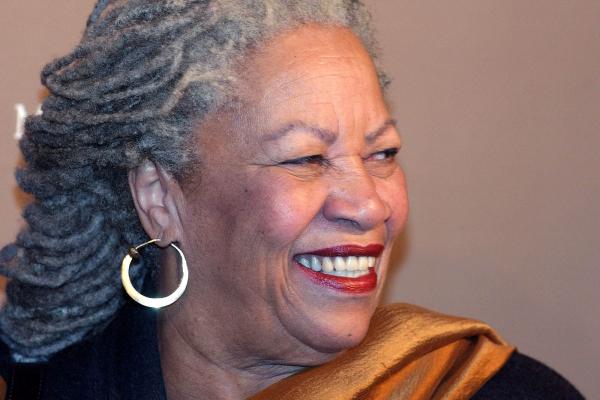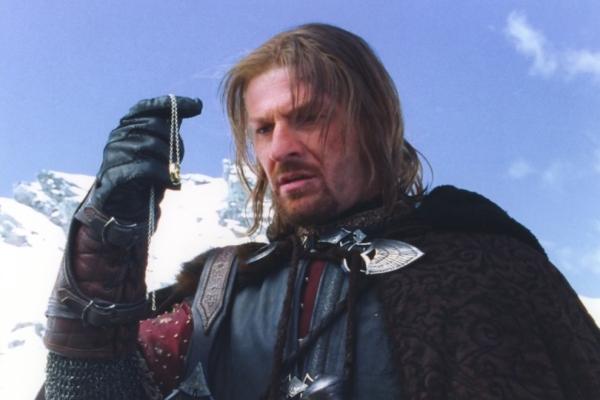After 88 years of life, literary genius Toni Morrison died on August 5, 2019. Morrison — a Nobel Prize winner, writer, and previous editor — lived a full literary life that encompassed storytelling for and by black people. Her acclaimed novels such as: The Bluest Eye, Beloved, Sula,and Song of Solomon have been known for their social and political commentary on race relations and sexism within the United States. Morrison’s work is threaded together by the notion of spiritual faith. Although not always overt, Morrison intentionally created her novels to be dependent upon religious concepts — a method that she and other scholars explore in the forthcoming book Goodness and the Literary Imagination, coming out October 2019.
Readers have praised and critiqued Morrison’s work for its testimony and dedication to African American experiences. In an interview with Charlie Rose in 1998, she said, “I have spent my entire writing life trying to make sure that the white gaze was not the dominant one in any of my books, and the people who helped me most arrive at that kind of language were African writers ... writers who could assume the centrality of their race because they were African and they didn’t explain anything to white people.”
The humanitarian and universal themes in her work — which are sometimes enveloped in challenging yet brilliant uses of language and literary devices — are rooted in religious and spiritual traditions that are both apparent and esoteric to its reader. Morrison’s books take the reader on an experience similar to her character’s spiritual conquest — a journey in need of unpacking.
Without being dogmatic, Morrison understood the importance of integrating a belief system within her black characters' fictional experiences. In the essay God’s Language, published in her recent book The Source of Self Regard, Morrison highlighted a 1994 survey indicating that 96 percent of African Americans believe in God. In that same essay, she wrote:
The history of African Americans that narrows or dismisses religion in both their collective and individual life, in their political and aesthetic activity, is more than incomplete — it may be fraudulent. Therefore, among the difficulties before me is the daunting one of showing not just how their civic and economic impulses respond to their religious principles, but how their everyday lives were inextricably bound with these principles.
Morrison understood that belief and faith are substantial to the sustaining force of black folks navigating both slavery and post-slavery traumas. Spirituality was already a way of life for many Africans sold into slavery, but when combined with the new religion of their masters, it became a complicated necessity for their survival. To reject that spiritual world would mean an overall erasure of African-American life — as the two are not mutually exclusive.
“It was important to her for two reasons, number one it was important in her own life,” recalled Davíd Carrasco a professor at Harvard Divinity School, friend of Morrison, and co-editor of her upcoming book.
“Growing up and as an adult, she went to morning mass all the time,” Carrasco said. “And secondly, she knew how important it was to African-American folks. Like going to dinner, you’re going to church. It’s a part of what you need to do in order to live.”
Morrison’s writing name, Toni, was birthed out of her own religious experience of converting to Catholicism. Raised in an African Methodist Episcopal church, Morrison converted to the Catholic faith at the age of 12, taking the confirmation name St. Anthony.
Although Catholic, the range in which Morrison wrote about her character’s religious and spiritual beliefs were not confined to her own practices but to a larger and diverse picture of black life. In Sula, Morrison depicts hoodoo and rootwork mentioning the “evil conjure woman,” whose children collected hair, footstep dust, and roots like High John the Conqueror. Paradise centers a black community whose church congregants are in a generational battle of modern versus traditional Christian doctrine — a controversy still relevant in today’s black churches. Song of Solomon not only carries biblical weight in its title, but its chapters tell a story that taps into Shamanism and African folklore.
“Toni has what I call three dimensions — three religious sort of approaches in her novels,” Carrasco said. “One is Christianity and the way African Americans took Christianity and made it their own.”
Enslaved Africans came to America with their own spiritual beliefs but were forced into the conversion of Christianity. As a result, African Americans incorporated their own creativity by adding rituals and traditions that would be specific to what we now know as the Black Church. Morrison was also very intentional about her depictions of African stories and mythologies such as the conjure woman in the story Sula and the mysteries of Pilate in the Song of Solomon. Thirdly, Morrison incorporated a spirituality she called the ‘strange stuff,’ a theme that is seen in most of her works.
Carrasco, impressed with the religious dimensions of Morrison’s work, met the author while attending one of her lectures at Princeton University. There, he compared her work to the French writer, Marie Cardinal, impressing Morrison. This conversation would lead to a friendship. Eventually Morrison asked Carrasco to research Afro-Brazilian religions and women — a theme she would unveil subtly within her next novel, Paradise, in which women connect with rituals that explore non-male powers.
Paradise is encrypted with Christian doctrine, allowing the reader to experience a particular type of fellowship while also critically considering the philosophies in which it arose. The story centers Ruby, a proudblack town with a history rooted in self-sufficiency — apart from a white racist society.
In the midst of this town, a generational conflict is brewing over the slogan on the town’s oldest possession — a community oven. Those from the old way are set on the saying, “Beware the Furrow of His Brow” (a warning), but the youth want it to read “Be the Furrow of His Brow” (an affirmation that they are God’s instrument). Simultaneously, an abandoned Convent lies on the outskirts of Ruby and acts as an unintentional boarding house for society’s “tainted.” Ironically, all of the “tainted” inhabitants are outcastwomen with names like Divine (another name for God) Grace (a plea in which one asks of their deity) and Consolata (meaning comfort).
These women are murdered by Ruby’s men, but their bodies disappear before burial. A witness and citizen of the town believes it is a sign that God has taken his servants to heaven, much like the return to Eden laid out in the Bible. The biblical Eden was supposed to be a place of freedom, but its inhabitants failed to obey the restriction placed on eating the forbidden fruit. Morrison depicts the town of Ruby as an Eden for black people to escape the burdens of racism, but the restrictions on women result in the necessity for another paradise that welcomes the outcasts: the Convent. This contradiction within the novel is the challenge that Morrison presents on the notion of heaven. What exactly is paradise and who does it accommodate? Is heaven a place for freedom? And if so, is that possible if there are restrictions?
Leading up to Morrison’s upcoming book of essays, scholars and pastors have continuously analyzed Morrison’s fictional work, dissecting the religious themes in her stories, while highlighting the sermonic ways in which she writes her novels.
In 2012, Harvard Divinity School hosted the recorded conversation “Have Mercy: The Religious Dimensions of the Writings of Toni Morrison.” The seminar, hosted by Carrasco and fellow Harvard Divinity School Professor Stephanie Paulsell, was comprised of scholars and ministers who were called upon to dissect the many sermons within Morrison’s novels. According to Carrasco and Paulsell, the inspiration for the lecture was partially drawn from her books, like her short novel Home.
“When one of the characters sees what this doctor has done to her, she says, ‘Have mercy.’ And that’s a cry of anguish.” Paulsell said. “It’s a critique of what this man has done to her, but it also seems to be directed at the readers — that she’s calling on us to have mercy.”
Morrison’s lecture and the Have Mercy six-week seminar are the foundations for the upcoming book, which is comprised of Morrison’s essay, Carrasco’s personal interview with her, and ten additional essays from scholars about the religious dimensions within her novels.
In her essay God’s Language, she concludes:
I have chosen this task, this obligation partly because I am alarmed at the debasement of religious language in literature; its cliché-ridden expression, its apathy, its refusal to refuel itself with nonmarket vocabulary (or its insistence on refueling itself with marketing vocabulary), its substitution of the terminology of popular psychology for philosophical clarity; its patriarchal triumphalism, its morally-opinionated dictatorial praxis, the unearned pleasure it takes in performability for its miracle rather than content; its low opinion of itself.
Many discuss the way Morrison centers womanhood and blackness within her work, but these themes would not be fully expressed without spiritual context. Her work shows the complexity of black religion, churches, and beliefs. In a subtle way, Morrison paints the picture of her critique. A religion forced upon a community is now ironically the foundation of their own prejudices and contradictions, and yet they have formed it into home. This is Black life: complex and at times contradictory, but beautiful, evolving, and necessary.
Got something to say about what you're reading? We value your feedback!






